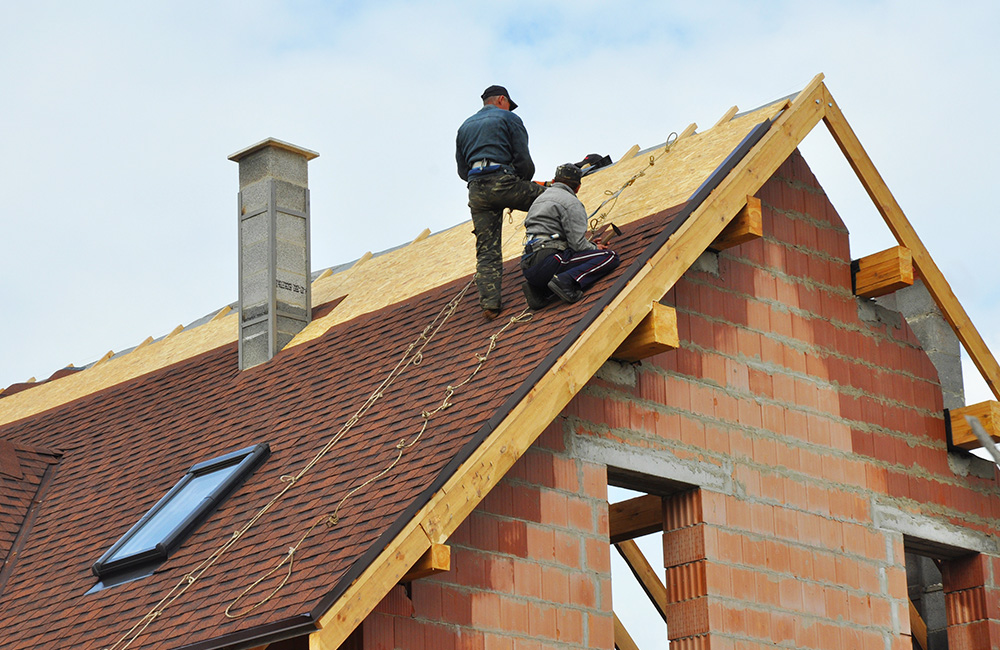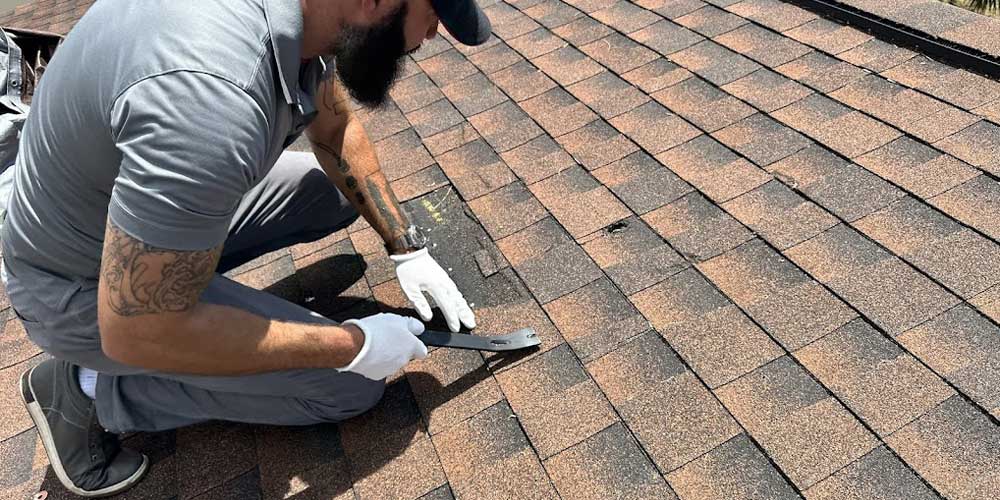Understanding the Various Sorts Of Roofing Systems: A Comprehensive Guide for Homeowners
With a selection of options-- ranging from the traditional gable to the modern level-- each type presents special advantages and difficulties that must line up with the home owner's certain requirements and ecological factors to consider. As we explore the ins and outs of numerous roofing types, it becomes noticeable that one size does not fit all; the appropriate option may surprise you.
Saddleback Roof
Saddleback roofs, characterized by their triangular form, are among one of the most popular roof covering styles because of their simplicity and performance in dropping water and snow. This design includes 2 sloping sides that satisfy at a ridge, enabling effective drain and reducing the danger of water buildup. The high pitch commonly connected with saddleback roofs improves their ability to handle hefty precipitation, making them appropriate for different environments.
In enhancement to their functional benefits, gable roofing systems provide visual versatility. They can be adapted to numerous building designs, from standard to modern homes. The layout can likewise fit additional features such as dormer home windows, which boost natural light and ventilation in the attic room space.
Moreover, gable roofing systems provide enough area for insulation, adding to energy performance. Homeowners can select from a range of roof materials, consisting of asphalt shingles, metal, and ceramic tiles, further enhancing personalization options.
Regardless of their advantages, saddleback roofs may need additional assistance in locations prone to high winds or heavy snowfall. Overall, the gable roof continues to be a favored choice because of its blend of capability, resilience, and visual charm.
Flat Roofs
Flat roofing systems are usually identified for their minimal style and practical applications, particularly in commercial and commercial settings (oahu roofing). These roofs include a horizontal or nearly horizontal surface, which permits easy building and construction and functional space usage. While they may lack the aesthetic charm of angled roofs, flat roofs use many advantages, especially in city settings where maximizing room is critical
Among the primary benefits of flat roofs is their accessibility. Home owners can make use of the roof covering space for various purposes, such as rooftop gardens, balconies, or photovoltaic panel installments. Additionally, flat roofs are normally a lot more affordable to set up and maintain compared to their sloped counterparts, as they require fewer products and labor.
However, level roofs do existing certain difficulties. Proper drainage is vital to prevent water pooling, which can lead to leaks and architectural damage. Thus, selecting high-grade waterproofing materials and routine examinations are crucial for making certain durability. Common products utilized for level roofing systems include built-up roof covering (BUR), customized bitumen, and single-ply membrane layers, each offering distinct benefits. On the whole, level roofs work as a versatile and useful selection for several house owners and businesses alike.
Hip Roofings
Hip roofing systems are identified by their sloped sides that converge at the top, developing a ridge. This style stands out from gable roofings, as all 4 sides of a hip roof incline downwards towards the wall surfaces, supplying a more secure framework. The angle of the slopes can differ, enabling adaptability in building appearances and functionality.
One of the primary advantages of hip roofs is their ability to stand up to heavy winds and damaging weather. The sloped surface areas make it possible for much check my reference better water drain, minimizing the risk of leakages and water damages. Furthermore, hip roof coverings offer boosted attic area, which can be made use of for storage or also exchanged habitable areas.
Nevertheless, building a hip roof can be much more pricey and complicated than less complex roofing system types, such as saddleback roofs. The extra product and labor associated with creating the slopes and making sure correct architectural integrity can bring about greater costs. Regardless of these downsides, numerous home owners prefer hip roofing systems for their durability, visual allure, and possibility for power effectiveness.
Mansard Roof Coverings
Mansard roofings, often recognized by their special four-sided layout, function 2 inclines on each side, with the reduced incline being steeper than the upper. This building style, stemming from France in the 17th century, is not only aesthetically enticing but functional, as it maximizes the useful area in the top floors of a structure. The high reduced incline enables more clearance, making it a perfect choice for attic Find Out More rooms or loft spaces, which can be converted into living areas.
Mansard roof coverings are characterized by their adaptability, accommodating different building designs, from standard to modern-day. They can be constructed with various materials, consisting of asphalt tiles, slate, or metal, providing homeowners with a variety of alternatives to suit their spending plans and preferences. Additionally, the layout allows for the assimilation of dormer windows, enhancing natural light and air flow in the upper levels.
However, it is vital to take into consideration the prospective disadvantages. Mansard roof coverings might need more maintenance due to the intricacy of their layout, and their steep inclines can be challenging for snow and rain drainage. Generally, mansard roofings incorporate elegance with usefulness, making them a popular selection amongst house owners seeking distinct building functions.
Dropped Roofings
As home owners increasingly look for simpleness and capability in their architectural designs, shed roof coverings have emerged as a popular choice. Characterized by a solitary sloping airplane, a shed roof offers a minimal aesthetic that enhances different home designs, from modern to rustic.
Among the key benefits of a shed roof is its straightforward construction, which frequently equates to reduce labor and material expenses. This design enables for efficient water drainage, lowering the threat of leaks and water damage. Additionally, the upright incline gives adequate space for skylights, improving all-natural light within the interior.
Dropped roofing systems likewise supply versatility in terms of usage. They can be effectively incorporated into enhancements, garages, or outside structures like pavilions and sheds. Moreover, this roofing system design can fit different roof covering products, consisting of steel, asphalt shingles, or perhaps green roofing systems, aligning with environmentally friendly efforts.
Nonetheless, it is vital to consider regional environment problems, as heavy snow tons may demand modifications to the roofing system's angle or framework. In general, shed roofs offer a functional and visually pleasing choice for homeowners seeking to take full advantage of functionality without endangering design.
Final Thought


Gable roof coverings, identified by their triangular form, are amongst the most preferred roofing styles due to their simplicity and performance in dropping water and snow. oahu roofing. The high pitch frequently linked with gable roofing systems boosts their ability to take This Site care of heavy precipitation, making them ideal for different environments
While they might lack the aesthetic charm of pitched roof coverings, level roofs provide numerous advantages, particularly in urban environments where maximizing space is important.
